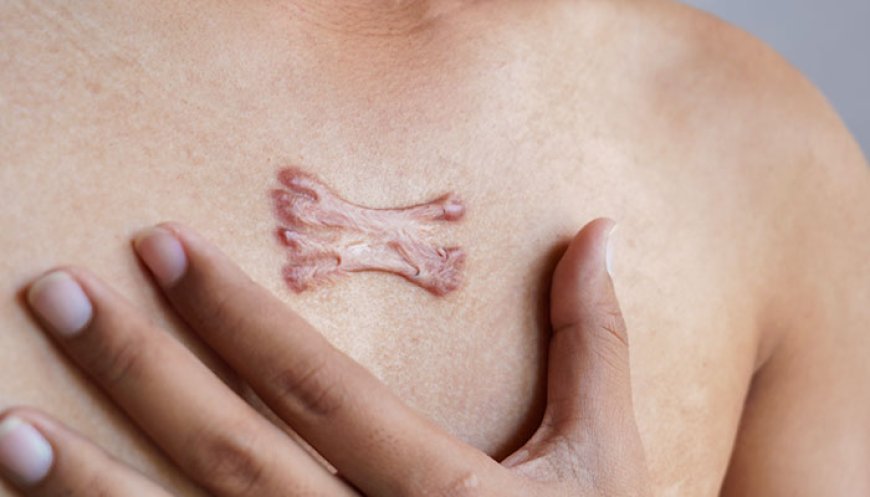New Breakthroughs: The Future of Keloid Treatment in Islamabad

Keloids have long been a source of frustration, with their stubborn nature and high recurrence rates making them a challenging condition to treat. However, the field of dermatology is undergoing a quiet revolution. New research and technological advancements are moving beyond traditional methods, offering hope for more effective and lasting Keloid treatment in Islamabad. The future of keloid management is no longer just about removing the scar; it's about targeting its root cause at the cellular level. This blog will explore some of the most exciting breakthroughs and what they mean for patients in Pakistan's capital.
The Shift from "Removal" to "Regulation"
For decades, keloid treatment primarily focused on physically removing or flattening the scar using methods like surgery, injections, or cryotherapy. While these are still foundational to treatment, the latest research emphasizes a new paradigm: regulating the biological processes that cause keloid formation in the first place.
Scientists now understand that keloids are caused by a complex interplay of genetic factors, inflammation, and abnormal cell signaling. This deeper understanding has paved the way for more sophisticated therapies that can be used in combination to achieve unprecedented results.
Breakthrough Combination Therapies
The biggest breakthrough in modern keloid treatment is the move towards a multi-modal, or combination, approach. Clinics in Islamabad are increasingly offering these advanced protocols, which have a much higher success rate than single-modality treatments.
-
Steroid-Chemotherapy Synergy: For years, corticosteroid injections were the gold standard. However, recent research has shown that combining a low dose of the chemotherapy drug 5-fluorouracil (5-FU) with corticosteroids is a game-changer. The corticosteroid reduces inflammation, while the 5-FU directly inhibits the proliferation of keloid-producing fibroblasts. This powerful synergy leads to a more significant reduction in keloid volume and a much lower recurrence rate.
-
PRP for Enhanced Healing: Platelet-Rich Plasma (PRP) has gained popularity in regenerative medicine, and its application in keloid therapy is showing promising results. Studies have shown that combining PRP with corticosteroids can enhance the therapeutic effect. PRP contains growth factors that help to modulate the healing response, promoting a more normal scar and reducing the chances of the keloid coming back.
-
Laser-Assisted Drug Delivery (LADD): This innovative technique combines two powerful methods. First, a Fractional CO2 laser creates microscopic channels in the keloid tissue. These channels act as a conduit, allowing topical medications like steroids, 5-FU, or even new molecular inhibitors to penetrate deep into the scar where they can work more effectively. This ensures that the medication reaches the very core of the keloid, where the overactive cells are.
Targeted Molecular and Cellular Therapies
The future of keloid treatment is in targeting the specific molecules and cells that drive their growth. While some of these are still in the early stages of research, they offer a glimpse into the next generation of therapies.
-
Gene Expression and RNA Interference: Researchers are exploring how to "turn off" the genes responsible for keloid formation. RNA interference (RNAi) is a technique that can silence specific genes, preventing the production of key proteins that lead to excessive scarring. While still largely experimental, this holds the promise of a personalized, gene-based therapy.
-
Bioelectric Stimulation Therapy: This non-invasive therapy uses precisely calibrated microcurrents to "reprogram" keloid fibroblasts. The goal is to alter the cellular behavior within the keloid, normalizing collagen production over time.
-
Targeted Inhibitors: Scientists have identified specific signaling pathways, like the TGF-β pathway, that are hyperactive in keloid tissue. Researchers are now developing small molecule inhibitors and topical compounds that can block these pathways, essentially cutting off the chemical signals that tell the scar to keep growing.
The Role of Technology in Diagnosis and Treatment
Technology is also revolutionizing how keloids are diagnosed and treated.
-
3D Keloid Mapping: Advanced diagnostic tools can create a 3D map of a keloid, providing a precise, volumetric measurement. This allows doctors to create a more accurate and personalized treatment plan and objectively track a patient's progress over time.
-
Artificial Intelligence (AI): Some forward-thinking clinics are using AI to optimize treatment protocols. AI can analyze a patient's keloid characteristics, medical history, and genetic profile to predict the most effective treatment and minimize the risk of recurrence.
What This Means for Patients in Islamabad
The good news is that many of these advanced therapies are already being integrated into leading clinics in Islamabad. While the cost of these cutting-edge treatments may be higher, their superior effectiveness and lower recurrence rates often make them a more economical choice in the long run.
When seeking Keloid treatment in Islamabad, it is crucial to find a dermatologist or plastic surgeon who is knowledgeable about these latest advancements. They should be able to offer:
-
A comprehensive, multi-modal treatment plan.
-
The use of combination therapies.
-
A strong emphasis on prevention and long-term aftercare.
By choosing a professional who stays at the forefront of keloid research, you can move from a place of frustration to a place of hope, knowing that you are receiving the best and most effective care available. The future of keloid treatment is bright, and it's being shaped by science that promises to not only treat the symptom but to tackle the root of the problem.
What's Your Reaction?

















































